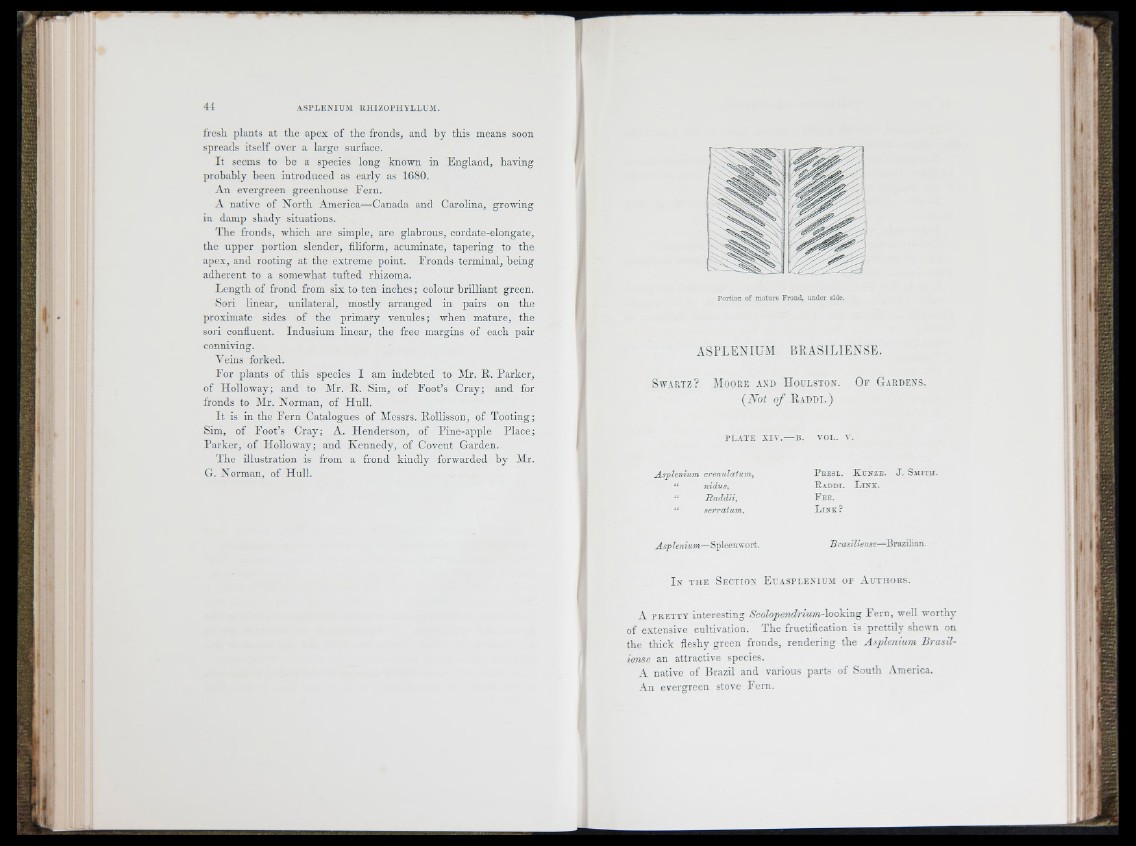
fresh ])Iiints at the ajicx of the fronds, and by this means soon
spreads itself over a large surface.
It seems to be a species long known in England, having
l^robably been introduced as early as 1680.
An evergreen greenhouse Fern.
A native of North America—Canada and Carolina, growing
in damj) shady situations.
The fronds, which are simple, are glabrous, cordate-elongate,
the upj)er jiortioii slender, filiform, acuminate, tapering to the
apex, and rooting at the extreme point. Fronds terminal, being
adherent to a somewhat tufted rhizoma.
Length of frond from six to ten inches; colour brilliant green.
Sori linear, unilateral, mostly arranged in pairs on the
proximate sides of the primary venules; when matiu’e, the
sori confluent. Indusium linear, the free margins of each pair
conniving.
A'eins forked.
For plants of this species I am indebted to Air. R. Parker,
of Holloway; and to Sir. R. Sim, of Foot’s Cray; and for
fronds to Sir. Norman, of Hull.
It is in the Fern Catalogues of Slessrs. Rollisson, of Tooting;
Sim, of Foot’s Cray; A. Henderson, of Pine-apple Place;
Parker, of Holloway; and Kennedy, of Covent Carden.
The illustration is from a frond kindly forwarded by Sir.
G. Norman, of Hull.
Î I
Portion of mature Froucl, under side.
ASPLENIUM BRASILIENSE.
S w a r t z ? S I o o r e a n d H o u l s t o n . O f G a r d e n s .
{ X o t o f R a d d i . )
p l a t e x i v .— B . VOL . V.
üenium crenulafum,
“ nidus,
“ P a d d ii,
serraium,
P resl. K uhze. J . Smith.
■Raddi. L ink .
F e e .
L in k ?
\\
i I
I ^
Aspîenium—Spleenwort. Brasiliense—Brazilian.
I n t h e S e c t i o n E u a s p l e n i u m o f A u t h o r s .
A p r e t t y interesting Scolopendnum-\o6kvci^ Fern, well worthy
of extensive cultivation. The fructification is prettily shewn on
the thick fleshy green fronds, rendering the Asplenium Brasil-
imisc an attractive species.
A native of Brazil and various parts of South America.
An evergreen stove Fern.
V
i'i